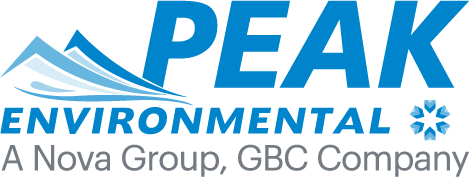 Management of materials generated at construction sites is an important aspect of these projects from cost, schedule and liability perspectives. When excess cut soil and demolition materials will be generated and need to be removed, it is common to send this material to licensed disposal or recycling facilities. However, current solid waste and recycling regulations allow alternatives to these facilities. Therefore, in addition to their typical material management process, project managers and estimators should consider other options for cost effective management of these materials. This may include transport of the material to other construction sites, site remediation project sites or re-development sites. Typically, relatively minor additions or modifications to a material characterization plan are needed to support the evaluation of alternative endpoints. With proper planning and support documentation to ensure compliance with regulations, this can be a very effective and cost saving option that benefits all parties.
Management of materials generated at construction sites is an important aspect of these projects from cost, schedule and liability perspectives. When excess cut soil and demolition materials will be generated and need to be removed, it is common to send this material to licensed disposal or recycling facilities. However, current solid waste and recycling regulations allow alternatives to these facilities. Therefore, in addition to their typical material management process, project managers and estimators should consider other options for cost effective management of these materials. This may include transport of the material to other construction sites, site remediation project sites or re-development sites. Typically, relatively minor additions or modifications to a material characterization plan are needed to support the evaluation of alternative endpoints. With proper planning and support documentation to ensure compliance with regulations, this can be a very effective and cost saving option that benefits all parties.
As part of their project, redevelopment sites and properties undergoing remediation that need fill material can establish site-specific material characteristic criteria that satisfy NJDEP regulations and guidance. These ‘acceptance plans’ are developed by a Licensed Site Remediation Professional (LSRP) for effective material management while still maintaining their primary obligation to protect human health and the environment at both the donor and receiving sites. The acceptance plans include information and data necessary to evaluate a source of material relative to the physical and chemical specifications needed at the receiving site.
If general information indicates a likely match, a summary package is typically submitted to the receiving site. The submittal includes the history and use of the donor property, the activity that generated the material, chemical sampling results, geotechnical characteristics of the material, and other information potentially affecting the quality of the material. Many receiving sites can accept soil, concrete, brick, other demolition materials, sediment, and other materials that meet their acceptance plan, as long as they meet geotechnical specifications and contaminant limits.
NJDEP fully supports alternate use of these materials with the goal of conserving resources and preserving landfill capacity. NJDEP has issued regulations and technical guidance, specifically the Fill Material Guidance for SRP Sites from their Site Remediation Program, to allow professionals to consistently implement the program in a protective and sustainable manner. SRP will be reinforcing these concepts in their planned Green Remediation guidance document. In addition, the NJ Division of Solid Waste has a long-standing Beneficial Use program supporting and encouraging the re-use of materials, in environmentally sound applications, that would otherwise be waste. As of August 2019, the Division reports it has approved a total of 3.9 million cubic yards of material for alternate uses. Many other states have programs similar to New Jersey’s Alternative Fill and Beneficial Use.
It should be noted that if your project needs fill material, and the planned use of your property allows it, consider identifying alternate materials as fill, including any you generate as part of the project. Acceptance requirements for your site can be developed pursuant to Solid Waste or Site Remediation regulations, as applicable for contaminant levels, and the necessary physical characteristics.
With this regulatory structure in place, evaluation of these alternatives is a legitimate tool in project planning to take advantage of probable cost savings through shorter transport distances and lower disposal costs in compliant ways. Less truck traffic, lower carbon footprint and other benefits support overall use of sustainable practices in the construction and environmental industries. To this end, engaging an LSRP to manage this aspect of your project will better ensure compliance, minimize potential liabilities, and secure cost savings without affecting schedule.

